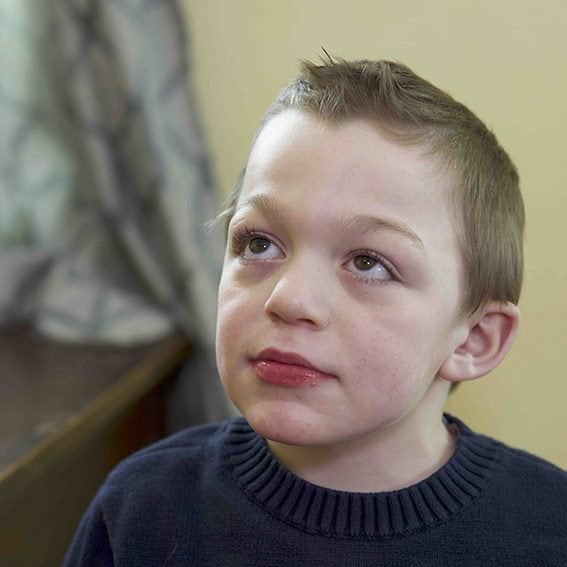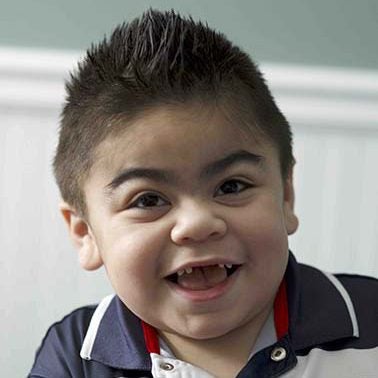Umbilical and inguinal hernias in children
Could they be a sign of the rare disease known as Hunter syndrome?
Hernias are relatively common in young children and can have a variety of causes. Types of hernia that are seen in children include umbilical hernias (near the belly button) and inguinal hernias (near the groin). Hernias are normally visible as a bulge, and are caused when part of the intestine or other abdominal tissue protrudes through a gap in the abdominal wall or groin.
One possible cause for umbilical and inguinal hernias in children is Hunter syndrome, which is also known as mucopolysaccharidosis type II (MPS II).
- Hunter syndrome is a rare, genetic condition that affects many systems of the body.
- It is estimated to affect around one in every 162,000 children born, and because of its genetic mechanism, the majority of the children affected are boys.
- Hunter syndrome is a progressive disease, and some symptoms can reach a point at which they become irreversible. Early diagnosis is important to ensure appropriate management can begin as soon as possible.
If you think that your child may be showing two or more of the symptoms of Hunter syndrome, speak to your doctor.

The presence of umbilical or inguinal hernias in children alone does not suggest Hunter syndrome, but if your
child is also experiencing unusual clusters of common childhood complaints, Hunter syndrome should be
considered.
Hernia frequency in Hunter syndrome
There is evidence to suggest that hernias are more common in people with Hunter syndrome than in the general population. Results from a study of more than 200 people with Hunter syndrome showed that 78% of them had experienced a hernia. Hernia was one of the earliest signs of Hunter syndrome, occurring at around 16 months of age on average.



Other signs and symptoms that may indicate Hunter syndrome

The signs and symptoms of Hunter syndrome vary greatly between individuals, but typically start to present between the ages of 2 and 4 years.
- Particular facial features, such as a prominent brow, broad nose and thick lips
- Large head
- Joint stiffness, which may lead to restricted movement
- Frequent or long-term diarrhoea
- Delays in childhood development (e.g. delayed walking, delayed speech)
- Breathing problems, including noisy breathing and snoring
It is important to remember that many of these signs and symptoms are common in childhood, and it is the combination of them that may indicate Hunter syndrome.
If you think that your child may be showing two or more of the symptoms of Hunter syndrome, speak to your doctor.
Take a look around the Huntersyndrome.info website to learn more about the causes, signs and symptoms of Hunter syndrome and the support that is available.
